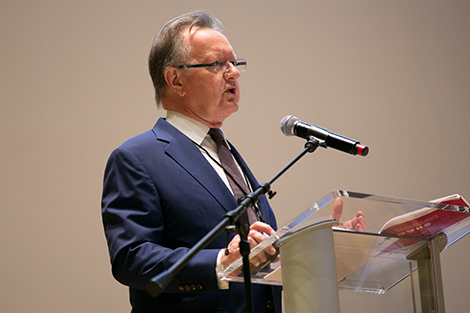Transparency is extremely important to us, so we are letting you know that we may receive a commission on some of links you click on from this page. See our disclaimer.

John Quench, professor at Harvard T.H. Chan School of Public Health and Harvard Business School
As we know from our recent post, workplace wellness programs can be linked to higher profits, but can businesses continue to improve their bottom line while simultaneously strengthening their overall “public health footprint?”
According to a recent article from the Harvard T.H. Chan School of Public Health, public health and business professor John Quelch defines this footprint as the way in which companies can positively or negatively affect not just employee health but also consumer, community, and environmental health through their products, services, and policies.
Quelch recently co-chaired the conference, “Building a Culture of Health: A New Imperative for Business,” at Harvard Business School with Chan colleague Howard Koh, the former Assistant Secretary of the U.S. Department of Health and Human Services. The 300 attendees of the conference discussed methods for improving the public health footprint of businesses by incorporating health as a widespread corporate value.
Based on a survey of corporate attendees, Koh and Quelch determined that many of their companies are making significant efforts to improve their employee and environmental health. But they have more work to do to increase their consumer and community health practices.

Howard Koh, Harvey V. Fineberg Professor of the Practice of Public Health Leadership at Harvard Chan
According to the article, “Several corporate speakers were challenged to do more by fellow panelists from public sector or consumer advocacy organizations.” Quelch and Koh saw the vigorous debate over these issues as a positive first step to instill a culture of health within business.
Quelch and Koh’s research will determine how companies with strong public health footprints are seeing returns on their investment across the four areas of health. Quelch states that “businesses are in and of the community,” and a dedication to health can improve brand image. For instance, CVS’s revenue increased after their company-wide ban of tobacco sales.
Due to the success of this year’s conference, the professors are planning another event for next year. As Quelch wrote in a recent Harvard Business School article, they will form workgroups of industry experts who will “tackle some of the more intractable problems at the intersection of health and business, such as:
- How to best set up an organization built around the culture of health concept;
- How to hire a chief health officer and how other parts of an organization relate to the position;
- How to measure the impact of a company's efforts across all four health pillars;
- What small business can do, especially in local communities, to advance the culture of health.”
As Quelch sees it, “every company is a health company.”





0 Comments